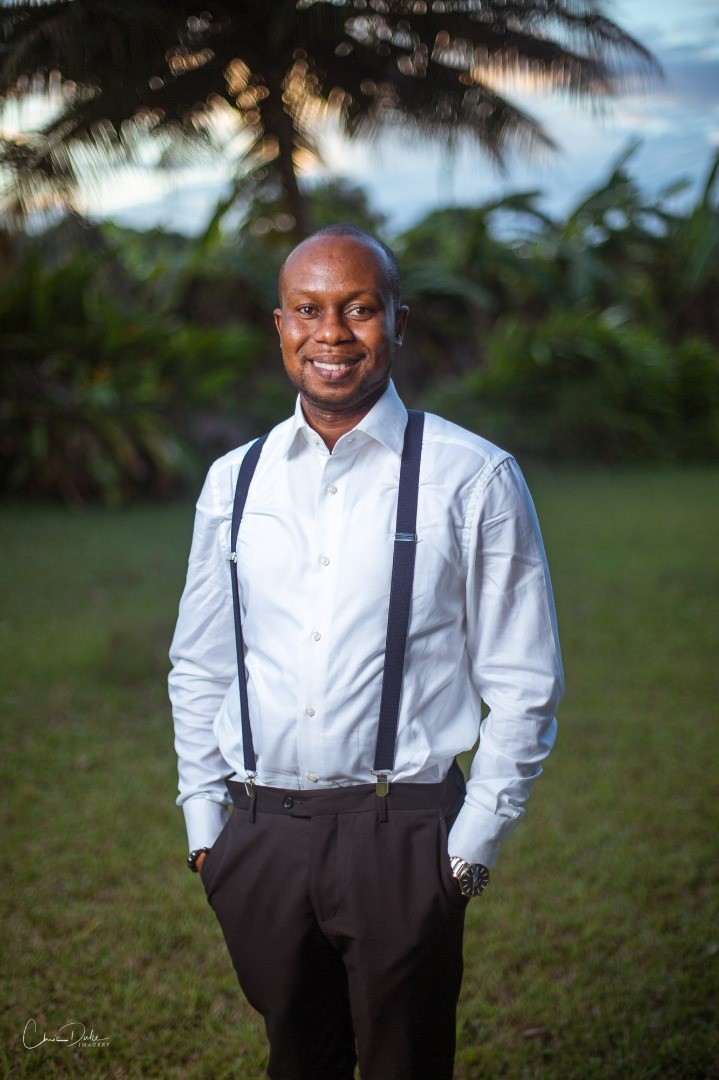The labyrinthine situation of visual stimuli and the individual understanding is often interpreted as the perception of art. The evolution of art is tracked back to Stone Age art (2,500,000-3,000 BCE) down to Bronze Age art (3,000- 1,200 BCE), Iron Age art (c.1500-350 CE), Medieval art (c.350-1,300 CE), The Renaissance (c.1,300-1620), post-renaissance art (c.1600-1850), Modern art (c.1850-1970) – and finally to what we presently have as contemporary art since 1970.
People often view art as having little or no importance, but art is believed to have created a lot of impact in our lives and in the world. It is the avenue to express one’s emotions, to tell a story and to learn, and to create bonds.
While people were born with the talent, others out of passion and interest also develop it as a skill, and finally a profession to many.
Just as every other profession, there are limitations to its growth; and today on Explore with JB, we take time to identify a talented young artist who is passionate about telling stories by using painting and sketches. His passion and love for art made him venture fully into it as a profession. He has pencilled portraits and images of high-profile individuals and still strives hard to find his feet in the world of art.

Let’s Explore the work of Sam, who is pencilling his success through art.
- Who is Sam Acquah? Tell us about yourself.
Sam Acquah is an industrious and promising young man born in January 1989 at Tema, and is the first child of his parents in a family of four. I received my basic education at the prestigious First Star Academy in Tema, continued to pursue Visual Arts at Koforidua Secondary Technical School, and then gained admission into the Kwame Nkrumah University of Science and Technology where I received a Bachelor’s degree in Industrial Art, and completed successfully in 2011.
Right after completing my national service with the Ghana Export Promotion Authority (GEPA) in 2012, due to unemployment I commenced drawing as a panacea to boredom and ennui – with the notion of landing a white-collar job later. Fortunately, I fell deeply in love with pencil-drawing on paper and eventually abandoned my dream of getting employed. And through several experimentations, I became the first Ghanaian artist to commercialise the fusion of coloured pencils with traditional graphite pencils to form a composition, in 2014. This style resonated very well with my clients and caused other artists to follow suit. This encouraged me to register my business as ‘Pencilled by AquaSam’ in 2015.
- Was drawing part of you growing up or a skill you acquired through education?
Soon after scribbling at the tender age of three (3), I began to sketch humans and cars in linear and circular shapes, popularly referred to as ‘koliko drawings’ in the local parlance, and gradually metamorphosed into realism. I must admit that formal education helped in harnessing and polishing my raw talent.
- What inspires you to do the work you do?
First of all, beautiful pictures inspire me to draw. There is a captivating force that propels me to replicate what I see on paper.
Secondly, the pencil – I regard this tool as a very humble and extremely less messy tool, which looks almost impossible to achieve the magnum opus results it produces. It is an ordinary tool that produces extraordinary results. This amazes me!
- Some people have the view that not much attention is paid to the creative arts industry in this part of the world, hence low income for players in the sector. Is that a true reflection, and how are you working to change the narrative?
Yes, of course it is a true reflection. Not much attention is paid to the creative arts industry. This is because we need a sense of urgency in reviving the industry. We ought to urgently regard the creative arts as a professional entity, not a leisure or hobby pastime. By so doing, we will be forced to develop regulations which govern, control and manage it; ensuring that players comprehend their tasks and responsibilities. We need to, once again, urgently think of creative art as a business venture and treat it as such.
We have institutions performing almost the same role in an industry that seemingly does not exist. The Ministry of Tourism, Culture and Creative Arts; Ghana Tourism Authority; Centre for National Cultures; Ghana Export Promotion Authority and the Creative Arts Council must be merged as one strong authority to effectively champion the cause of all creative persons, in order to foster and generate wealth.
In my own small way, I have decided to hold at least, two (2) major exhibitions annually together with my fellow pencil artists, with support from corporate institutions, offices of our surviving former presidents, the Creative Arts Council and the media, in order to sensitise awareness about the beauty and essence of pencil art.
- Jean-Augusta-Dominique, a man who created the study of hands and feet for the golden age in 1862, said drawing includes three and a half quarters of the content of painting, hence drawing contains everything except the hue; does that apply to your work? What goes into your drawing to make it stand out?
Yes, Jean-Augusta-Dominique’s idea about drawing forming three and a half quarters of the content of most two-dimensional artworks is certainly right – drawing forms the basis of what I do. Drawing the figure is very essential, as I mostly draw portraits of individuals and families. Resemblance is very key, because when my clients receive their finished pieces, the first and foremost thing they look out for is resemblance before any other added feature or quality. So, in this way, drawing forms the foundation of my work before ‘adding life’ in the form of shading and colouring.
What sets me apart from other pencil artists is the colour or hue I introduced into my work in 2014. I realised a monotonous monochromatic trend of pencil art filed, especially on social media – and I found that situation boring. I however became a pacesetter by veering off the status quo by mixing coloured pencils with graphite (black and white) pencils, which other artists have found interesting and emulated this process.
My work is also highly detailed, as I try my possible best to register almost everything I see in the reference picture. Unlike other artists who turn a blind eye to, especially, the background and patterns in the character’s costume, for purposes of limited time, I go the extra mile in producing exactly what I view – adding more meaning, value and precision to my work.

- What are the major challenges you face as an artist in Ghana?
Ask a Ghanaian what the creative arts industry is, and I can bet my last pesewa that most people will talk about entertainment. This is because we have narrowed its meaning down to music and the performing arts, and if there is a little space in our minds we add fine art. This is where our challenges and woes as artists in Ghana stem from. Inadequacy of laws, and policies that encourage, promote and sustain us as creative people are totally dormant and weak, depriving the nation and artists of maximum profit from creations. Our designs are not patented – giving room for intruders to use our designs for free, for their own economic gains and leaving original creators and the nation at a loss.
Lack of support from government is also killing the art industry; since government does not realise it derives value from artists, they do not prioritise our needs. Successive governments have only paid lip-service, so the performance and fortunes of the sector continue to deteriorate. Our craft is not respected, causing the general public to look down upon artists.
- Do you think we have enough copyright laws to protect the work of artists?
We have the Copyrights Act (Act 690) enacted on 17th May 2005, which replaced the previous parliamentary Act No. 110 of 1985. The law came to effect after the previous one underwent a metamorphosis – aimed to combat numerous complaints from producers, inventors and researchers over lack of definitive laws to efficiently protect against infringement of intellectual property rights.
Unfortunately, there is little education about the existence of this law; and although there have been several infringement of copyright, no one has been tried and jailed for not more than three (3) years by the tribunal, as the law stipulates, to serve as a deterrent to offenders. Most cases that were heard by the tribunal resulted in out of court settlements, whereby the end-result was kept hidden from the media. The bottom-line is although the law exists, it does not bite. There is also very little information on how to register intellectual property with the National Folklore Board.
- Where do you see yourself in 10 years?
In the next ten (10) years, I envisage myself as the most celebrated pencil artist, not just in Ghana but all Africa. I will not only be an artist but a designer as well, solving minor and major constraints with respect to transportation design. I will be a formidable brand and strong force to reckon with, with the help of God.
- What inspires you? And your final words to motivate others like you.
Finally, what inspires me most is in the book of Proverbs 18:16 where it reads, “a man’s gift opens doors for him, and brings him before great men”. With these words permanently etched in my memory, doors which seemed impossible to access have opened.
I urge the youth, and most especially other emerging artists, to make prudent use of social media, since it has the tendency to catapult them into greatness. Prayer, determination, originality, consistency, hard work, foresight, truthfulness and finesse must be their hallmark for excellence.
I also urge parents to allow and support their creative wards by following their passion in any art-related field, since following your passion brings maximum satisfaction.
Sam pencil art










